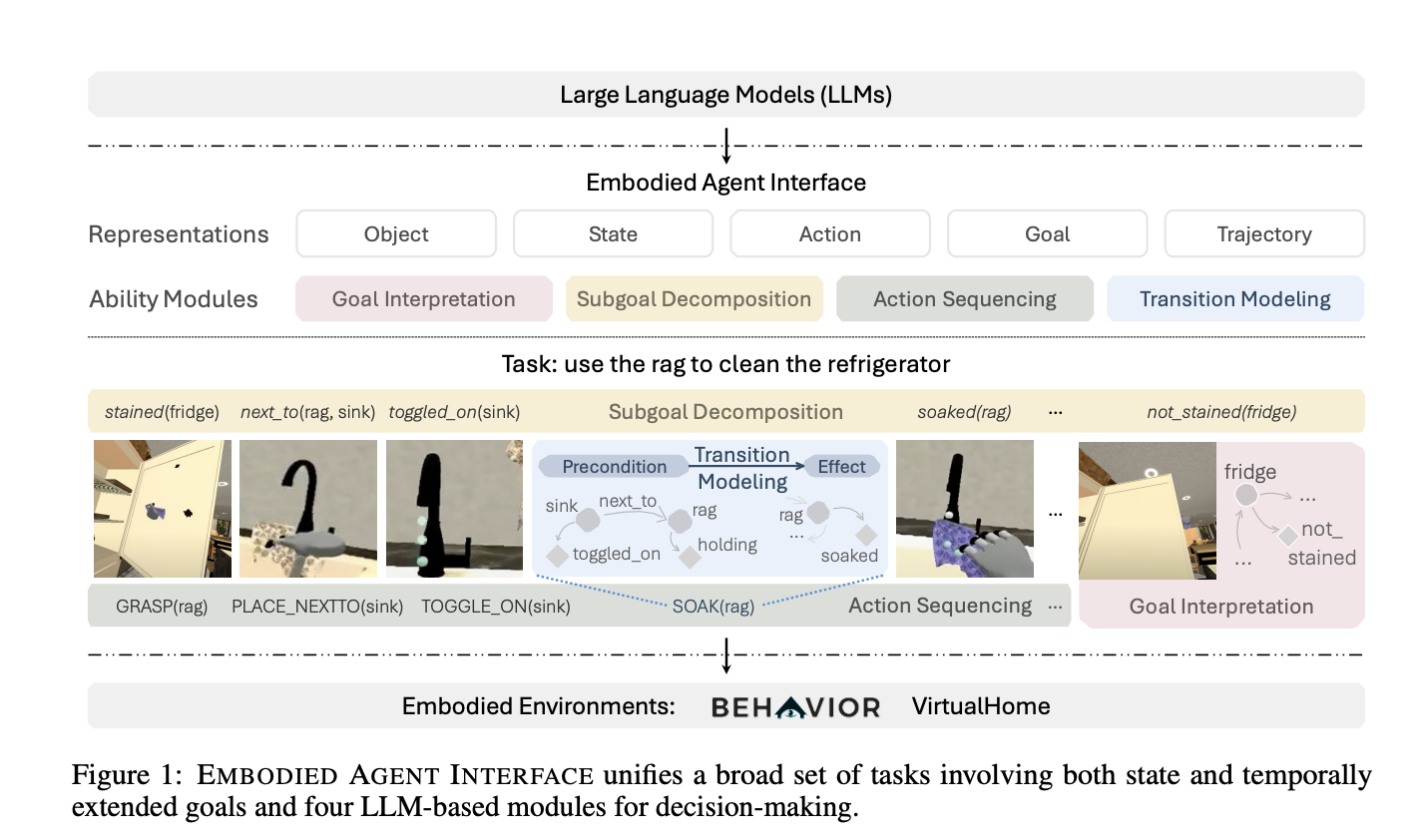
Understanding Large Language Models (LLMs)
Large Language Models (LLMs) are powerful tools, but we need to evaluate them based on their ability to make decisions in real or digital environments. Current research shows that there is still much to learn about what LLMs can truly do. This gap exists because LLMs are used in various fields with different goals and setups.
Current Evaluation Limitations
Most evaluation methods focus only on whether a task was completed successfully. While this indicates if an LLM achieved its goal, it does not reveal specific weaknesses or issues in its decision-making process. Without this detailed understanding, it’s hard for researchers to optimize LLMs for specific tasks, limiting their use in areas where they could excel.
Introducing the Embodied Agent Interface
The Embodied Agent Interface is a new framework designed to improve how we evaluate LLMs. It standardizes how LLMs handle input and output, making it easier to assess their performance across different tasks. Here are the three main benefits:
1. Task Integration
This framework allows LLMs to tackle various tasks, from complex projects that require multiple steps to simpler goals that need specific conditions met. This makes it easier to compare LLM performance across different areas.
2. Key Decision-Making Modules
Four important modules are included in the interface:
- Goal Interpretation: Understanding the desired outcome of a task.
- Subgoal Decomposition: Breaking larger goals into smaller, manageable steps.
- Action Sequencing: Determining the right order to perform actions.
- Transition Modeling: Predicting how the environment will change with each action.
3. Comprehensive Evaluation Metrics
Beyond just success rates, the interface offers detailed metrics that highlight specific errors, such as:
- Hallucination Errors: When LLMs create things that don’t exist.
- Affordability Errors: Mistakes in practical actions, like forgetting to open a cup before pouring liquid.
- Sequencing Errors: Issues with the order or completeness of steps taken.
This approach allows for a deeper understanding of LLM capabilities, highlighting areas for improvement.
Conclusion
The Embodied Agent Interface provides a robust framework for assessing LLMs in decision-making tasks. It breaks down complex jobs into smaller components, allowing for thorough evaluation and helping identify where LLMs can be most effectively applied. This ensures that their strengths are utilized effectively.
For more insights, check out the Paper and GitHub. Follow us on Twitter, join our Telegram Channel, and connect on our LinkedIn Group. If you appreciate our work, subscribe to our newsletter and join our 50k+ ML SubReddit.
Upcoming Live Webinar
Oct 29, 2024: Discover the Best Platform for Serving Fine-Tuned Models: Predibase Inference Engine.
Transform Your Business with AI
Stay competitive by leveraging the Embodied Agent Interface. Here’s how you can benefit:
- Identify Automation Opportunities: Find key customer interaction points where AI can help.
- Define KPIs: Make sure your AI efforts have measurable impacts.
- Select an AI Solution: Choose tools that fit your needs and allow for customization.
- Implement Gradually: Start with a pilot project, gather data, and expand wisely.
For advice on AI KPI management, contact us at hello@itinai.com. Stay updated on AI insights through our Telegram or @itinaicom.
Discover how AI can enhance your sales processes and customer engagement at itinai.com.


























